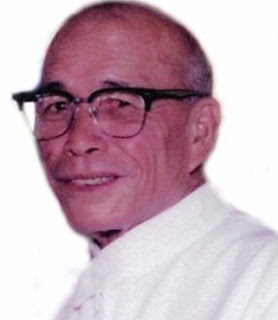SALAKLULA' (or INARAJAN POOL)
YT : Cris Paul Adventures
It's one of Guam's more famous seaside scenes. Locals love it just as much as tourists.
Everyone knows it as Inarajan Pool, but the area's Chamorro name is SALAKLULA'. There's a glota at the end, so be sure to voice it.
I'm sure people have been swimming in it for centuries, but it didn't get the island-wide attention it now has until the 1960s. Keep in mind that Guam didn't have a "beach" mentality in the old days as we do now. Certainly people went to the beach and swam, but not with as much importance as we do now. The sea was mainly a source of food, there wasn't a culture of "recreation" back then and "sports" meant cockfighting in the old days.
People say that Inarajan Pool is NATURAL, but that is not totally true. Man has left his fingerprints on it for a while now.
1966
The first mention of Inarajan Pool in Guam's newspaper after the war was in 1966 when the Inarajan Social Improvement Club took it upon themselves to turn Salaklula' into a public swimming pool.
By 1966, the naturally-formed pool was BLASTED to open up more spaces and deepen the pool. Next, Ken Jones and the J&G people sent a crane down to DREDGE the blasted pool and remove the debris left over from the blasting. They would also cement the edges around the pool to smooth them out.
And, after that, the pool has had a life of its own; some highs and some lows. Besides the thousands who have had loads of fun swimming there, over the years it has taken a beating from typhoons, became a dumping ground for people's trash, polluted and almost ignored because of it (with government warnings to avoid it). As recent as 2015 a man had a heart attack while in the pool and drowned as he went under the water.
But, problems get solved; the government funds improvements and the pool remains a popular place. People swim, jump into the pool and BBQ in the picnic pavilions. The government has built ample parking, toilets and showers.
THE MEANING OF SALAKLULA'
A few elderly people in Inalåhan tell me that SALAK was a children's mispronunciation of SÅDDOK which means "river." When kids told their parents they were going to swim in the pool, they'd say SALAK instead of SÅDDOK (even though a pool is not a river).
This differs from Påle' Román who says in his 1932 Chamorro dictionary that SALAK is connected with a word that means to line up two-by-two. What that has to do with the pool is beyond me. Maybe nothing.
They also say that LULA' means "to harvest suni (taro)." So their interpretation is that SALAKLULA' means "river for harvesting suni." Påle' Román does say that lula' means "to harvest suni." I'm not just 100% sure about the salak part.
WHAT ABOUT "SALUKLULA?
Just to confuse us even more, SALAKLULA' has also been called SALUKLULA by others, and it makes a tempting alternative because there is a word SALUK (or SALOK).
SALUK means a "gorge, pass, gully, ravine, channel or canal."
One can see how the pool can be considered almost any one of those in a broad sense; basically a drop in the terrain surrounded by walls of earth.
As enticing as this alternative might be for others, I have a few reasons for hesitating.
1. As far as I know, no name for the Inarajan Pool area shows up on any map at all that I have seen (starting in the 1800s) until the 1968 Geological Survey map, where the name is SALAGLULA, as in earlier in this blog post.
2. SALUGLULA starts to appear in the Guam Daily News in the late 1960s. But so does SALAGLULA. So BOTH names run concurrently all through the media from the 1960s until the 2010s. Since the 2010s, the media uses SALAKLULA' a bit more. So it's hard to argue which name is correct when both names appear more or less in equal numbers in print.
The Year 2000
3. OLDER VILLAGERS, unrelated and not with me at the same time, told me quite clearly that the name is SALAKLULA'.
MISTAKEN SIGN
Parks & Rec is trying to promote the Chamorro name for Inarajan Pool, but they need to correct the sign.
SAULAGLULA means "to whip Lula." Saolak (to whip).
The name is SALAKLULA', not Saulaglula.







.jpg)








